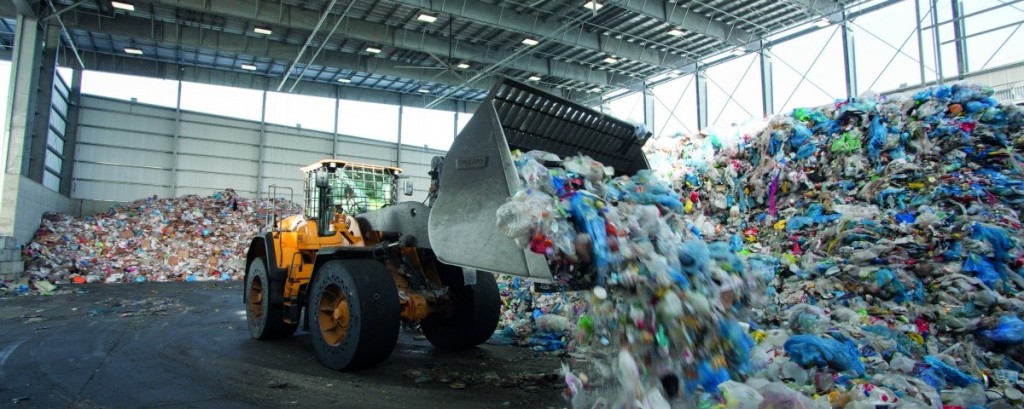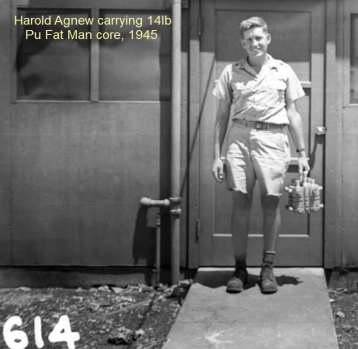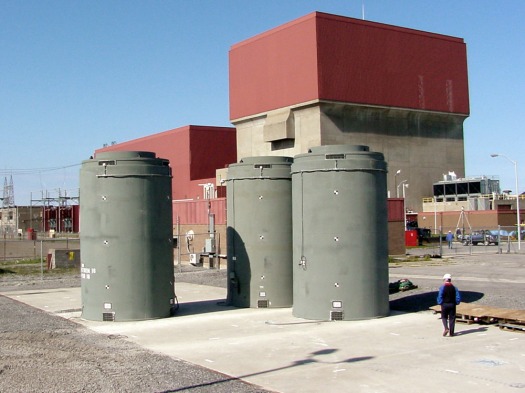Powering Ships and Desalination
Cargo ships emit more air pollution than all of the world’s cars, but we don’t power them with emission-free nuclear power because we are worried about nuclear proliferation. However, if we would equip these ships with new, proliferation–resistant reactors, we could save seven million barrels of oil per day, eliminate 4% of our greenhouse gas emissions and replace those huge fuel tanks with profitable cargo.

Propelling one of our [USA] immense aircraft carriers at 27 mph for 24 hours requires only three pounds [1.36 kg] of nuclear fuel, which is equivalent to 400,000 gallons [1.8 million litres] of diesel fuel. (Burning 100 gallons [455 litres] of diesel fuel creates one ton of carbon dioxide.)
California’s drought-stricken Central Valley, which was a dry savanna before “civilisation” arrived, is more than 10 trillion gallons [46 billion metres3] per year behind in precipitation. Fortunately, there is a remedy, but that remedy will require an abundance of carbon-free electricity created by safe, efficient nuclear power plants.
The non-nuclear Carlsbad desalination plant produces some 50 million gallons [230 million litres] of fresh water per day with 40 MW, which only supplies 7% of San Diego’s needs, but supplying all of the state would require 140 Carlsbads, which is why the Diablo Canyon nuclear power plant has begun to produce fresh water.
There should be many more plants like Diablo, and there would be, but for the opposition of anti-nuclear zealots whose efforts helped accomplish the closure of California’s San Onofre nuclear power plant. As a result, San Onofre’s 2.4 billion watts of carbon-free electricity are being generated by plants that burn huge volumes of natural gas (methane), which raises CO2 levels and worsens Climate Change.

San Onofre Nuclear Generating Station 2013 photo D Ramey Logan
Tree ring study shows California’s drought worst in 1,200 years

Why do we persist with carbon fuels when six uranium oxide pellets the size of the tip of your little finger, contain as much energy as 3 tons of coal or 60,000 cubic feet of natural gas? Just a fistful of uranium can run all of New York City for an hour, and the spent fuel “waste” products are far less than that.
The 2.2-megawatt Excel Energy plant at Becker, MN – the state’s largest emitter of greenhouse gases – turns 60 million pounds of coal per day into CO2, but less than 100 pounds of uranium would produce the same amount of electricity without creating any CO2.
How does a water-cooled, uranium-fuelled Light Water Reactor (LWR) work?
What are its pluses and minuses?
Some claim that uranium mining is especially dangerous because the ore is radioactive, but they are wrong. The radiation level just one foot from a drum of uranium [yellow cake] is only 20% of the cosmic radiation level that passengers experience on a jet flight – and the ore from which the oxide was derived is even less hazardous.
In a LWR, uranium pellets containing about 4-5% U-235 are sealed in about 25,000 12-foot zirconium tubes. Within those tubes, the U-235 emits neutrons that sustain a chain reaction that releases huge amounts of heat that raises the water temperature to 600 degrees F [320 C], so it must be “kept” at 2,700 psi [20 MPa] to prevent it from boiling. The super-heated water is circulated through a heat-exchanger to make steam in a separate plumbing loop. That steam powers a turbine, which spins a generator. And because the super-heated water would explosively expand 1,000 times if there were a leak, a huge, immensely strong containment dome encloses the reactor so that steam or other gases can’t escape. Once started, a LWR can run for three years with only periodic breaks for refuelling.

What about the “waste”?
Nuclear Fuel Recycling Could Offer Plentiful Energy
Nuclear power plants are required to contain 100% of their spent fuel (“waste”), but if you were to get all the electricity for your lifetime from conventional reactors, your share would weigh just two pounds [one kilogram], and only a small part of that would be hazardous long term.
During fission, reaction products accumulate in the pellets, which become cracked, and must be replaced during a multi-day shut-down during which the rods are moved to pools filled with water, which absorbs neutrons, to keep the decaying fuel from overheating.
After underwater storage for up to 8 years, radioactivity has decreased to the point that the rods can be stored in self-ventilating, concrete cylinders. And after 10 more years, 90% of the highly radioactive elements are no longer hazardous.

On-site storage is a sensible solution because 96% of this spent fuel can fuel modern, “fast” and other reactors to make more electricity. In 2018, the US generated 4.2 billion megawatt hours of electricity from all sources, but we have enough spent fuel to generate 4 billion megawatt years of CO2-free electricity! Why are we waiting?
“Human societies are addicted to their way of life, and they are fanatical in their defence. Hence, they are reluctant to reform. To admit error is rare among individuals and unknown among states. Instead of changing their minds, leaders redouble their efforts to do what no longer works, wooden-headedly persisting in error until the bitter end.” [Wind and solar – not nuclear]
William Ophuls
These pellets also contain isotopes needed for nuclear medicine. (Plutonium 239, which the anti-nukes fuss about, has a half-life of 24,000 years. When held in a gloved hand, one only feels slight warmth due to its extremely slow decay, and as spent fuel decays, it becomes safer – unlike the toxic ash and the particulates made by burning carbon, which remain toxic forever.

However, Caesium, Iodine and Strontium isotopes are dangerous because they mimic food elements that our bodies need. Iodine decays rapidly, but Strontium and Caesium decay by half in about 30 years, so we should store them safely for 120 years, at which time their activity has dropped by 94%.
Note the absence of shielding, even though Mr. Agnew [b. 1921, d. 2013, age 92] is carrying the plutonium that destroyed Nagasaki at the end of World War II.
Good video on spent fuel from Columbia plant, featuring Dr. James Conca.
Dry Storage of Spent [Used] Fuel Casks. No worker protection is needed
Heavily nuclear France has a recycling program that greatly reduces its volume and the length of time it must be stored. As a consequence, all of France’s multi-decade spent fuel could be stored on one basketball court.
In comparison, all of the “waste” generated in the U.S. since the fifties could be stored on one football field in self-ventilating, concrete containers. After just 40 years of storage, only about one thousandth as much radioactivity remains as when the reactor was turned off for fuel replacement. (Only a small portion needs long term storage or recycling.)
However, because recycling can retrieve plutonium isotopes from the waste, some of which can be used for making weapons, President Carter closed our [USA] only recycling plant during the Cold War in an attempt to placate Russian fears that we’d use the plutonium for making nuclear bombs.
Scientists turn nuclear waste into diamond batteries (that will last 1,000’s of years) by Philip Perry
WHO’S AFRAID OF NUCLEAR WASTE?
Unfortunately, there was, and is, another reason: The anti-nuclear crowd has promoted radiophobia so effectively that many voters and legislators refuse to even consider building the new, super-safe, highly efficient reactors that can use 95% of our stored “waste”, including the plutonium, as fuel. (During the last 70 years, just 56,000 tons of nuclear “waste” was generated in the U S, but the city of New York creates that much in just 6 days.

General Electric and Southern Company Team Up to Power the Planet With Nuclear Waste
[Types of Radioactive Waste by Cameco
Radioactive waste is generally divided into three categories depending on its level of radioactivity: low, intermediate and high-level waste.
- Low-level waste includes slightly contaminated clothing and items that comes from places such as nuclear medicine wards in hospitals, research laboratories and nuclear plants. Low-level waste contains only small amounts of radioactivity that decays away in hours or days. After the radioactivity has decayed, low-level waste can be treated like ordinary garbage.
- Intermediate-level wastes mostly come from the nuclear industry. They include used reactor components and contaminated materials from reactor decommissioning. Typically these wastes are embedded in concrete for disposal and buried.
- High-level waste generally describes spent (or used) fuel from nuclear reactors. It is highly radioactive, will remain so for many years, and requires special handling.
According to the IAEA, low and intermediate level wastes comprise about 97% of the volume, but only 8% of the radioactivity of all radioactive waste. ]
Coming up next week, Episode 18 – Pass the Salt Dear – How Fission Gets Rock Solid Stability
Links and References
1. Next Episode – Episode 18 – Pass the Salt Dear – How Fission Gets Rock Solid Stability
2. Previous Episode – Episode 16 – Green is Clean Air and Clean Water for All
3. Launching the Unintended Consequences Series
4. Dr. George Erickson on LinkedIn
5. Dr. George Erickson’s Website, Tundracub.com
6. The full pdf version of Unintended Consequences
7. https://dailylogistic.com/world-largest-container-ships/
8. https://splash247.com/ulstein-debuts-thor-claiming-it-is-shippings-nuclear-powered-silver-bullet/
9. https://www.youtube.com/watch?v=IBRVb0-0kAw
10. https://en.wikipedia.org/wiki/Diablo_Canyon_Power_Plant
11. https://en.wikipedia.org/wiki/Claude_%22Bud%22_Lewis_Carlsbad_Desalination_Plant
12. https://en.wikipedia.org/wiki/San_Onofre_Nuclear_Generating_Station
13. https://earthsky.org/earth/tree-ring-study-shows-californias-drought-worst-in-1200-years/
14. http://climatewarmingcentral.com/nuclear_page.html
15. https://www.anl.gov/article/nuclear-fuel-recycling-could-offer-plentiful-energy
16. https://nuclearenergyinfo.blogspot.com/2010/10/what-is-spent-fuel.html
17. https://en.wikipedia.org/wiki/Harold_Agnew
18. https://www.youtube.com/watch?v=0JfJEK3R1k0
19. https://www.linkedin.com/in/jim-conca-2a51037/
20. https://www.kiteandkeymedia.com/videos/is-nuclear-energy-and-waste-safe-or-dangerous-and-how-to-manage-storage-disposal-radiation/
21. https://www.cameco.com/uranium_101/spent-fuel-management/spent-fuel/
22. https://www.youtube.com/watch?v=IzbI0UPwQHg
23. https://www.linkedin.com/in/ben-heard-743b6014/
24. https://bigthink.com/surprising-science/scientists-turn-nuclear-waste-in-diamond-batteries-thatll-last-for-thousands-of-years/
25. https://bigthink.com/people/philip-perry/
26. https://www.foxbusiness.com/markets/general-electric-and-southern-company-team-up-to-power-the-planet-with-nuclear-waste
27. https://www.cameco.com/uranium_101/spent-fuel-management/spent-fuel/
#UnintendedConsequences #GeorgeErickson #ClimateChange #FissionEnergy #NuclearEnergy #SpentNuclearFuel #DiabloCanyon #TheThoriumNetwork #Thorium #Fission4All #RadiationIsGood4U #GetYourRadiation2Day














You must be logged in to post a comment.